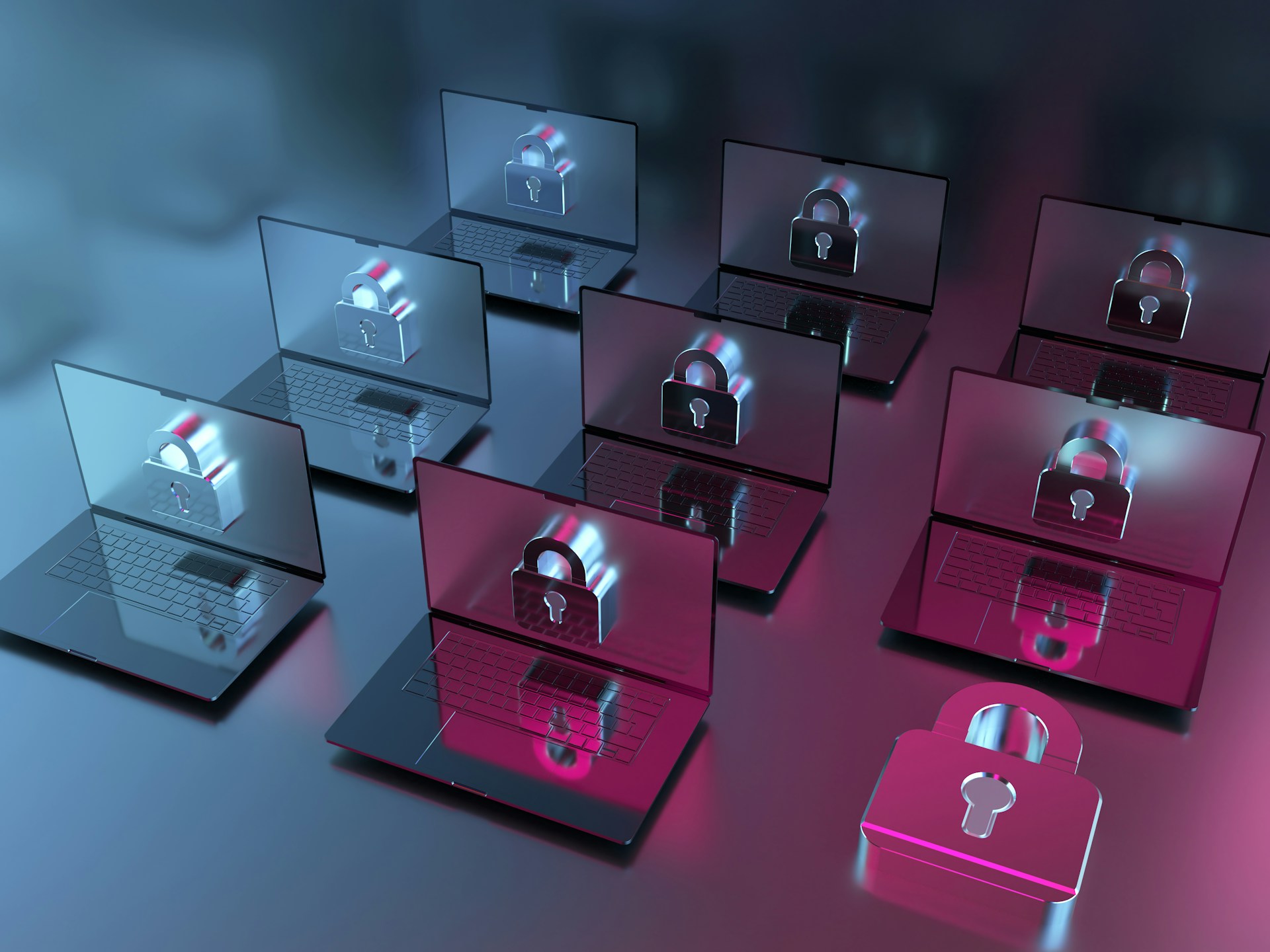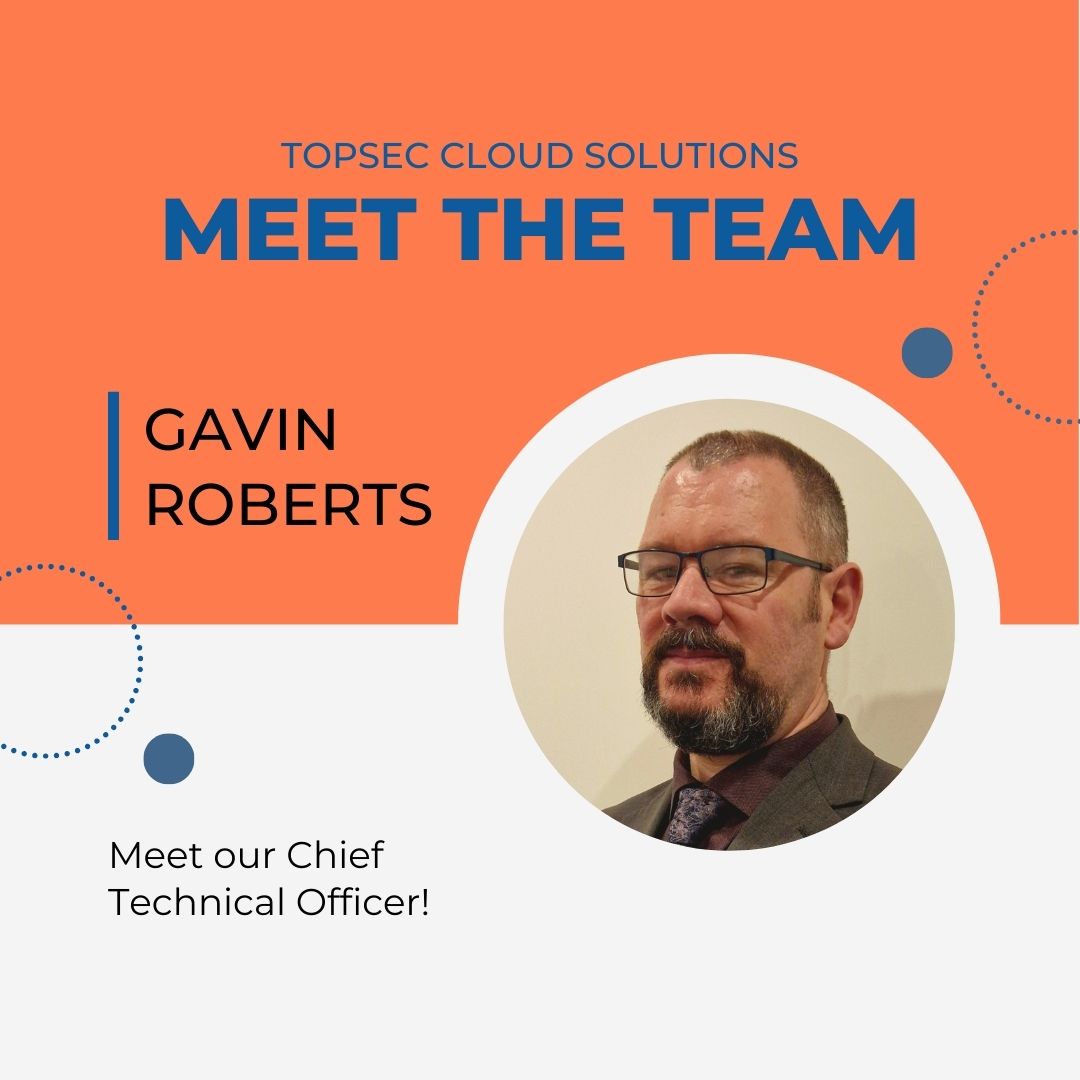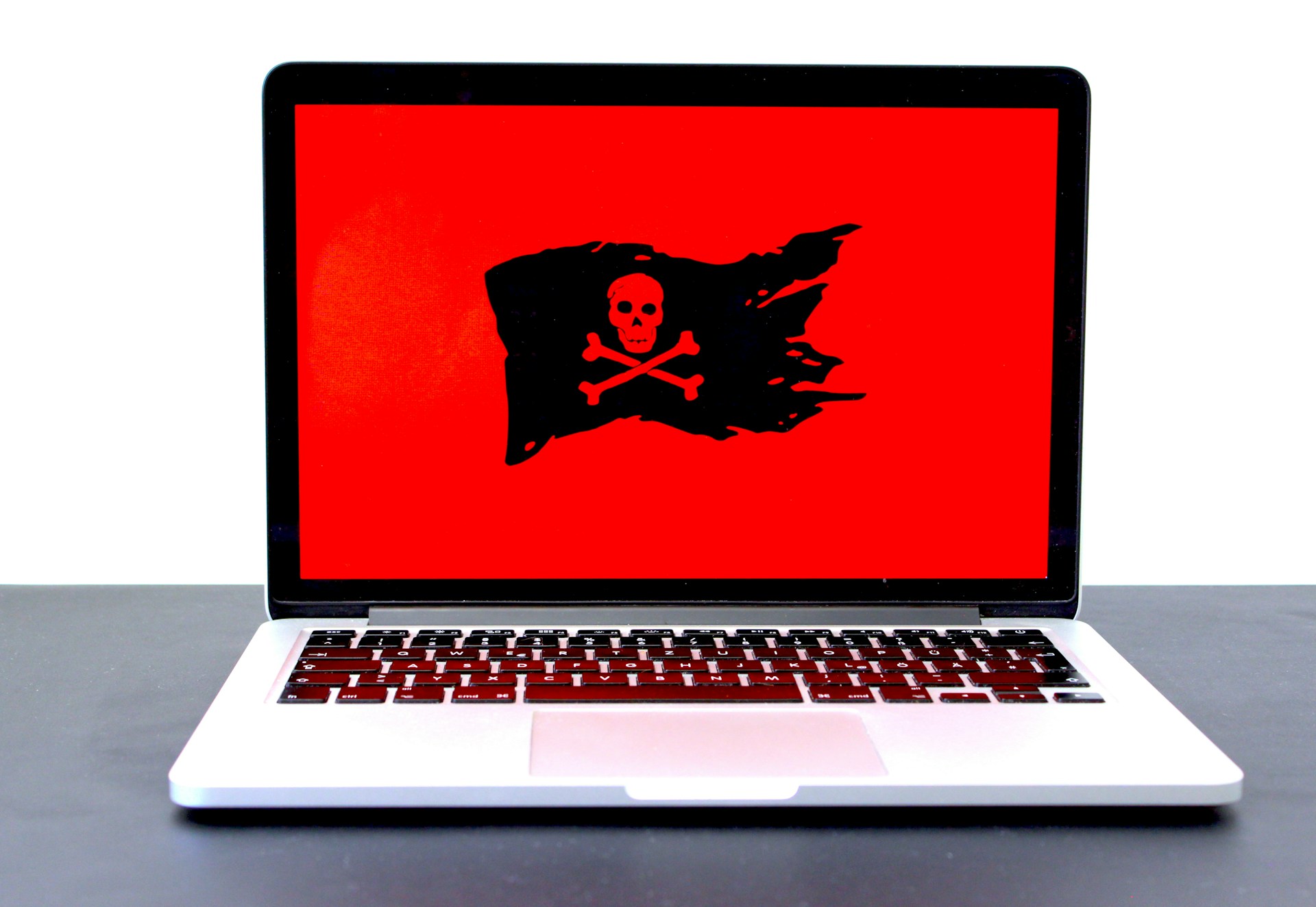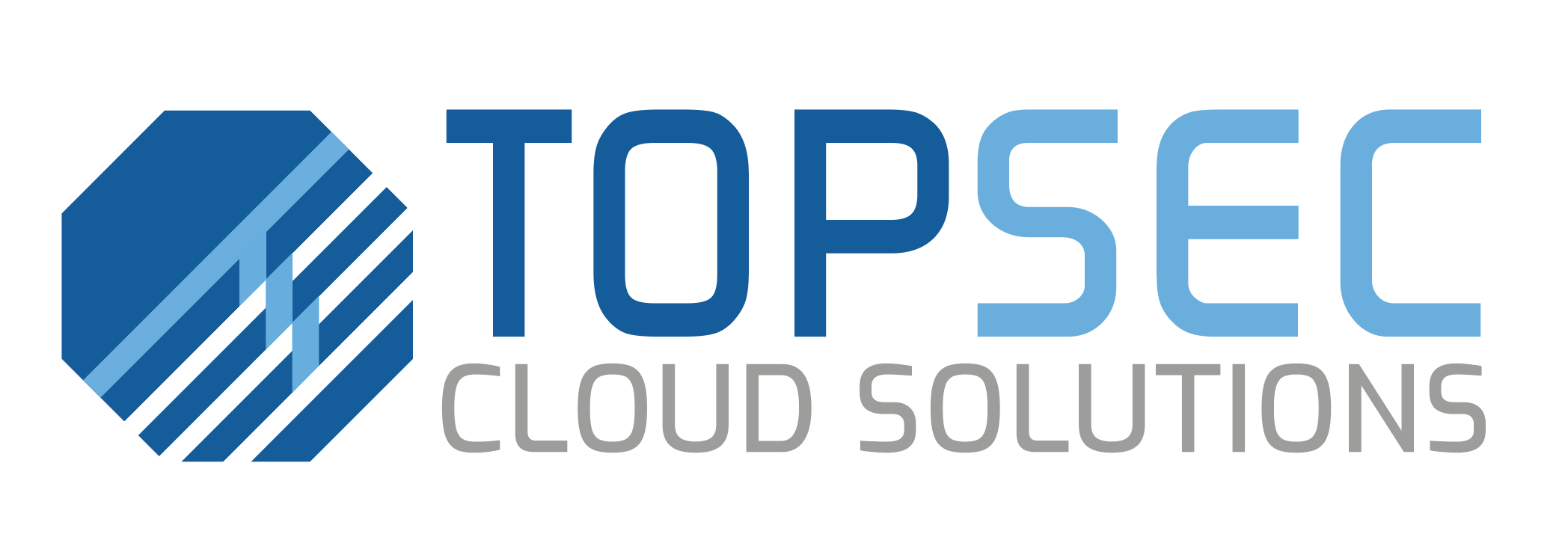How DMARC Is Still Critical and Why Regular Monitoring is Essential

Learn why SPF, DKIM and DMARC are vital for email security, and why continuous monitoring is necessary to prevent phishing, spoofing, and email fraud.
Meet the team: Topsec CTO, Gavin Roberts

Meet The Team: Gavin Roberts Chief Technical Officer Send an Email Gavin Roberts Chief Technical Officer A lover of technology and a committed family man, Gavin Roberts has the work/life balance conundrum sussed with a focus on technology’s capabilities and regular (not as regular as he’d like though!) fishing trips. We recently enjoyed a friendly chat over coffee to delve deeper into Gavin’s world, both professionally and personally. Here’s what we discovered! Q. 1 Can you share key experiences that led to your role at Topsec Cloud Solutions and how they shape your approach? Gavin: Sure, I’ve had quite the journey in the tech field. I started in support roles with major companies like DEC and Compaq, which later merged into HP. This early experience laid the foundation for my tech career, emphasising the critical nature of robust support systems. Then I got an opportunity to move into the secure payments industry. This was a pivotal moment. It was the early days of online payments, and I was deeply involved in fraud prevention. This role gave me a thorough grounding in understanding the intricacies of security and technology. The next step for me was a natural progression to focus more on coding and security solutions. Which led me to the CTO role at Topsec. My approach has always been about blending robust technology with strong user support. I believe that technology should serve people. Not the other way around! “I believe that technology should serve people. Not the other way around!” Q. 2 Can you outline major shifts in email security and their impact on Topsec’s strategies and the industry? Gavin: Over the years, the landscape of email security has evolved significantly. The rise of AI and machine learning has been transformative, but we need to have a balanced approach. It takes time to separate the hype from the true functionality. At Topsec, we integrate AI cautiously to enhance our existing strategies while maintaining the human touch. This is crucial in crisis situations. We’ve also seen an increase in sophisticated threats like QR code phishing and tricky OneDrive URLs, which can change after passing security checks. To combat these, we’ve developed tools that re-scan links and attachments over time to catch these delayed threats. “This proactive approach keeps our clients safe and cements our place as an industry leader in innovation.” Q. 3 How do you ensure a human-centric tech approach amidst technical complexities, and can you share examples? Gavin: Technology is complex. But Topsec sets itself apart by investing the time to make it accessible and beneficial to our users. This isn’t lip service; we put our money where our mouth is. For example, we prioritise user-friendly interfaces and clear communication, so our clients understand what our technology is doing for them. A great example of our human-centric approach is our customer support. Our clients regularly comment on how reassuring it is to speak with a person when they encounter an email security issue. We have a dedicated team that not only addresses technical issues but also ensures our clients feel supported throughout their security journey. It’s about building trust and relationships, not just offering tech solutions. Q. 4 Highlight a significant success story during your tenure at Topsec that exceeded expectations. Gavin: One standout moment was the development of our “Inbox Protect” tool. It was initially designed to offer internal tenant protection but ended up solving several emerging loopholes involving dynamic links. This tool has been crucial in preventing new kinds of email-based attacks, protecting their email eco system both internally and externally. Q. 5 What emerging trends in email security excite you, and how is Topsec preparing for them? Gavin: The integration of AI in cybersecurity is particularly exciting. As mentioned, there’s a lot of hype around AI but some remarkable use cases are also emerging. “At Topsec, we’re focused on leveraging this technology to enhance our predictive capabilities and improve the user experience.” Sometimes speed is a good thing and sometimes not. At Topsec, we’re deliberately taking a gradual and informed, and even incremental approach, to ensure the adoption of AI ensures we remain at the cutting edge without compromising on security. Q. 6 Share strategies for maintaining work-life balance in a high-pressure tech environment. Gavin: Well, life is busy which makes the business case for taking breaks even stronger! I’m from Wales originally, and while I’m delighted Ireland has been home for many years already, it’s a great feeling to head back to see my family and friends too. I’m lucky to be able to do that fairly regularly with my friends. I also love fishing and a fishing trip is my ideal weekend away. And then I also sketch. I’ve drawn portraits for many years. In fact, I was once considering studying art. I’m glad technology won out but that I still draw. People occasionally ask me to draw portraits for them, perhaps of their children or grandchildren to give as a gift. So I still get plenty of opportunities to get my sketch pad out! Q. 7 How does customer feedback influence product development and service strategies at Topsec? Gavin: Customer feedback is integral to our development process. It helps us understand user needs and guides our product enhancements. For instance, feedback on our email security tools has led to improvements that make them more intuitive and effective. Feedback is how we evolve in alignment with our customers’ needs. Q. 8 Describe your leadership style and its impact on your team’s dynamics and performance. Gavin: The broader culture at Topsec is all about taking ownership and this filters into my leadership of my team. It’s important to convey to team members that they are part of a team. We’re here to support each other, and as CTO I am determined to give my team members everything they need to succeed. However, at the same time I create an environment where my staff feel empowered to take initiative and own their projects. We
Ransomware and Email Security: A Comprehensive Guide to Protecting Your Digital Assets

Ransomware andEmail Security A Comprehensive Guide to Protecting Your Digital Assets Get a Quote Download Datasheet Email Security >Ransomware Ransomware and Email Security: A Comprehensive Guide to Protecting Your Digital Assets By Cian Fitzpatrick | 14th February 2024 Ransomware attacks have escalated rapidly in the first few months of 2024. And while they were always a formidable threat to individuals and businesses alike, these attacks are becoming even more sophisticated. But all is not lost. As Deloitte’s report explains, 91% of all cyber attacks come through email. That gives us the first clue as to how to withstand being In the crosshairs of ransomware attacks. Namely, email security emerges as a frontline defence, pivotal in thwarting the advance of malicious actors. To do this, it’s important to understand the intricacies of ransomware and how fortifying your email protocols can significantly mitigate the risk of a devastating breach. In this article, you will learn: The nature and evolution of ransomware threats. Best practices for enhancing email security. How to create a robust response plan for ransomware attacks. Investing in your email security is a strategic business move that has benefits across your whole organisation. Now that it’s Spring, why not spring clean your inbox to protect your digital assets against the growing tide of ransomware threats through strategic email security measures. Understanding Ransomware DMARC stands for Domain-based Message Authentication, Reporting, and Conformance. This protocol, integrating SPF (Sender Policy Framework) and DKIM (DomainKeys Identified Mail), is crucial in verifying email authenticity. In turn, ensuring an email really is from who it says it is from reduces the risk of cyber threats such as phishing and spoofing. Now we can see the Valentine’s link! Verifying your email authenticity is how you treat your email recipients well! The Critical Role of Email in Ransomware Attacks Email remains the most common vector for ransomware attacks, serving as a direct line for attackers to deliver malicious payloads to unsuspecting victims. This is a sobering thought, but it’s also an encouraging one. Shore up your email security and you go a long way to securing your whole business. The simplicity and effectiveness of email-based tactics, combined with the human factor of curiosity or negligence, make email a preferred tool for cybercriminals. Ransomware is often spread through phishing emails that masquerade as legitimate communications from trusted entities. These emails might contain malicious attachments or links that, once clicked, initiate the ransomware infection process. For example, a seemingly benign PDF or Word document attached to an email can, when opened, unleash ransomware onto the user’s system. Similarly, links embedded within the email body can redirect users to compromised websites designed to download ransomware directly onto their devices. Protect your organisation against ransomware attacks Get A Quote Enhancing Email Security to Combat Ransomware Even with robust preventive measures in place, the possibility of a ransomware attack cannot be entirely eliminated. For this reason, having a comprehensive ransomware response plan is crucial for minimising damage and swiftly restoring operations. Key components of an effective response plan include immediate isolation of infected systems, identification of the ransomware variant, a communication strategy, engagement with cybersecurity professionals, recovery and data restoration and post-incident analysis and strengthening defences. Developing a Ransomware Response Plan Google and Yahoo will start rejecting a portion of email correspondence from users who don’t comply fully by the deadline in the coming months. You may receive particular error codes and messages if your emails are refused because they don’t follow these new guidelines. These codes are useful bits of information that can help you solve the problems; they are not just arbitrary strings of characters and numbers. Case Studies: Successful Defense Against Ransomware These case studies have been compiled from an amalgamation of real world examples to highlight the importance of preparedness, the efficacy of comprehensive email security and the benefits of having a rapid response plan. 1. Example of a Phishing Email Leading to Ransomware Infection. Imagine a finance manager at a mid-sized company receives an email that appears to be from their CEO, requesting urgent review of an attached invoice. The email looks legitimate, complete with the CEO’s email signature and company logo. However, the attachment is actually a malicious file that, once opened, encrypts the company’s financial data and demands a ransom. This example illustrates the sophistication of phishing attempts and the importance of verifying email contents before opening attachments. 2. Example of a ransomware attack on a small business without a backup plan. A small retail business falls victim to a ransomware attack after an employee clicks on a malicious link in an email. The ransomware encrypts their sales and inventory data, causing the business to halt operations. Without recent backups, the business faces a dilemma: pay a hefty ransom with no guarantee of data recovery or attempt to rebuild its data from scratch, risking significant financial and reputational damage. This scenario highlights the critical need for regular data backups as part of a comprehensive cybersecurity strategy. 3. Successful Mitigation of a Ransomware Attack Through Quick Response. An IT administrator at a law firm notices unusual network activity and quickly identifies it as a ransomware attack in progress. By immediately isolating the infected systems and deploying the firm’s response plan, the administrator prevents the ransomware from spreading to critical case files. Thanks to well-maintained and encrypted off-site backups, the firm is able to restore the affected systems without paying the ransom, showcasing the effectiveness of a rapid response and robust backup strategy. The Ransomware Menace The menace of ransomware looms large. It’s also not going away anytime soon (if ever). But understanding its workings and prioritising email security can significantly reduce your vulnerability to attacks. Our intention with this article has been to explore the evolution of ransomware, the critical role of email in its dissemination, and actionable strategies for fortifying your defences against these cyber threats. Additionally, the development of a comprehensive ransomware response plan cannot be over exaggerated, nor the lessons learned from successful

